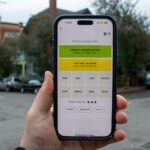The iPhone 16 is a little over a month old, and I’ve been using it almost nonstop since it was announced last month. I reviewed the phone for Digital Trends and bought one with my own money as my personal phone of choice.
Not long after its unveiling, I wrote an op-ed complaining about the iPhone 16’s lack of a 120Hz display. I said it was the “one thing holding back the iPhone 16” and that its 60Hz screen was “an unreasonable spec.” I’d still like to see the refresh rate addressed with the iPhone 17, but after living with the iPhone 16 for over a month now, I’ve found that it’s not nearly as big of an issue as I believed it would be.
A 60Hz screen matters, until it doesn’t
I switched to the iPhone 16 after using the iPhone 15 Pro Max and Google Pixel 9 Pro — two phones with 120Hz displays. And I’ll admit, it was a rough transition. After months of my eyes seeing 120Hz refresh rates every day, going to a phone with a 60Hz one felt pretty bad. Be it scrolling through Reddit or swiping through my home screens, everything on the iPhone 16 felt slow and choppy.
But then something happened. I stopped noticing it.
A little over two weeks into using the iPhone 16, I realized I had stopped thinking about the 60Hz refresh rate. I could still see it, sure, but I didn’t find it was actively souring my time with the phone.
Fast-forward to today, when I’ve used the iPhone 16 for over a month, and the 60Hz display doesn’t even occur to me. I use my iPhone 16 constantly throughout the day to text friends on iMessage, check my fantasy football league, complete my daily Duolingo lessons, and spend too much time on X and Reddit. The iPhone 16 handles all of those things flawlessly.
Does it display all of my apps and games with the same hyper-fluidity as an iPhone 16 Pro? No, and if I use the iPhone 16 Pro side by side with the iPhone 16, the difference between a 120Hz screen and a 60Hz one is still noticeable. But normal people don’t do that. Almost anyone getting the iPhone 16 will use it as their only phone; in that situation, it’s a nonissue.
Refresh rates don’t make or break a phone

Another factor comes into play: the rest of the iPhone 16. A 60Hz refresh rate doesn’t instantly make a phone terrible, just like a 120Hz screen doesn’t guarantee a phone will be excellent.
Take the Moto G Power 5G 2024 as an example. It’s a $300 smartphone with a 120Hz display. It’s a better spec than the iPhone 16’s 60Hz refresh rate, but it’s also an objectively worse display in every other regard. It has extremely poor viewing angles, less impressive colors, and terrible outdoor visibility. And even with a 120Hz refresh rate, it’s much slower and more laggy due to its less powerful chipset.
None of this should be surprising. That Motorola phone costs $300, while the iPhone 16 is $799. Of course, the iPhone is going to be better! But that’s my point. We can point to cheaper Android phones with 120Hz screens as examples of the iPhone 16’s “poor value,” but that conversation ignores everything else that makes the iPhone 16 one of my favorite phones of the year. It doesn’t account for its excellent and comfortable design, great cameras, reliable battery life, top-notch performance, or anything else. Refresh rates should be part of the conversation, sure, but they’re far from the be-all and end-all .
Don’t let it stop you from getting the iPhone 16

I want to make something clear. Don’t take this as my way of saying Apple should get a free pass for not offering a 90Hz or 120Hz display on the iPhone 16. At $799 (or $899 if you get the iPhone 16 Plus), the lack of a 120Hz panel is objectively a poor value — especially when you look at competing Android phones.
However, I also think it’s fair to raise that criticism while also acknowledging it’s not nearly as big of an issue as some people make it out to be, just like I did a month ago. For how expensive the iPhone 16 is, should it have something faster than a 60Hz refresh rate? Probably! But it’s also far from a deal-breaker.
If you’re eyeing the iPhone 16 as your next smartphone purchase and are putting it off solely because it doesn’t have a 120Hz refresh rate, stop it. It’s a fair complaint, but it’s nowhere near as big of a deal as I and others online have made it out to be. Whether 60Hz or 120Hz, the iPhone 16 is a fantastic little phone that I continue to love using — refresh rates be damned.
Read the full article here














